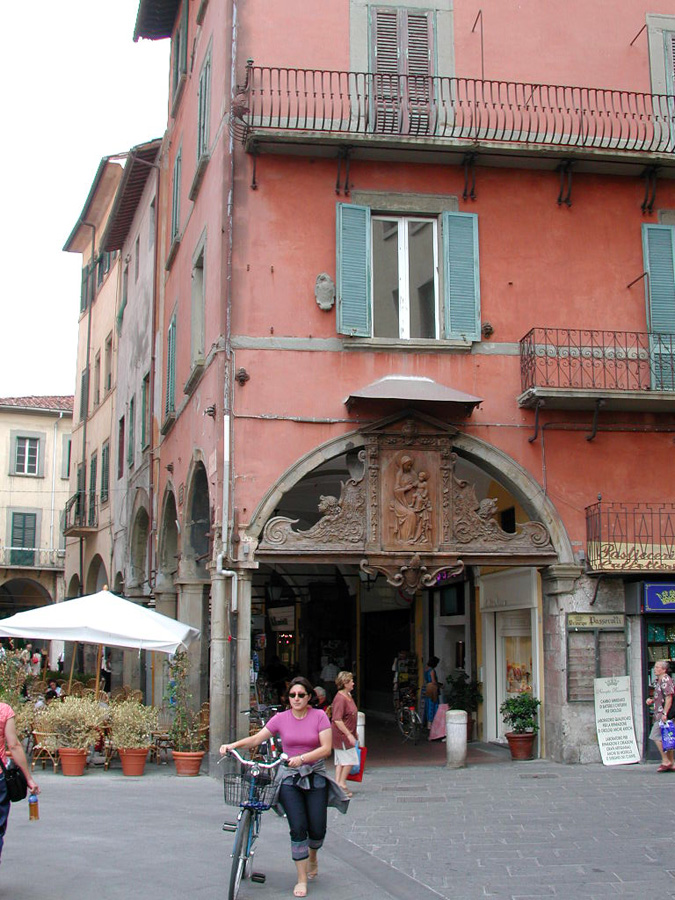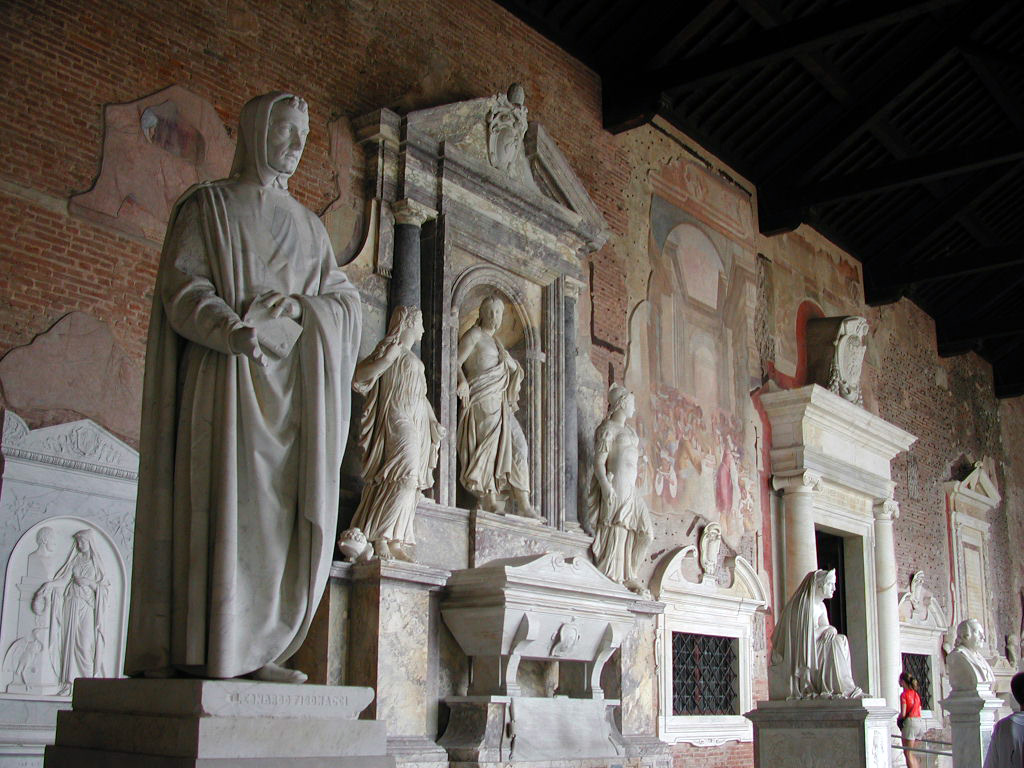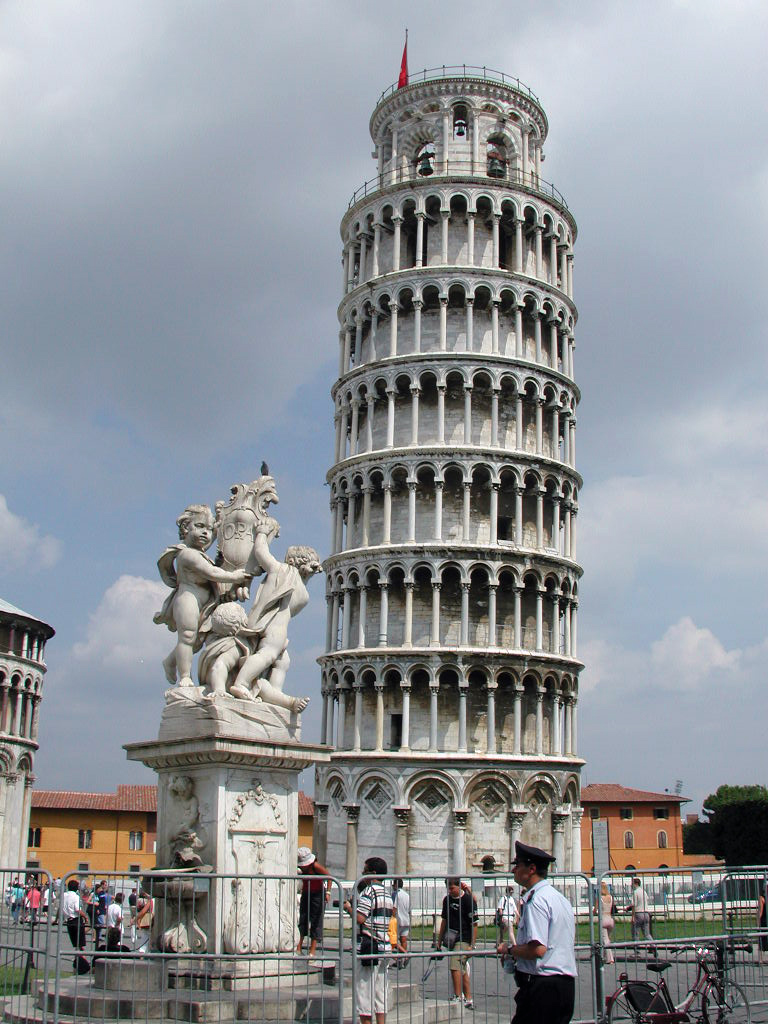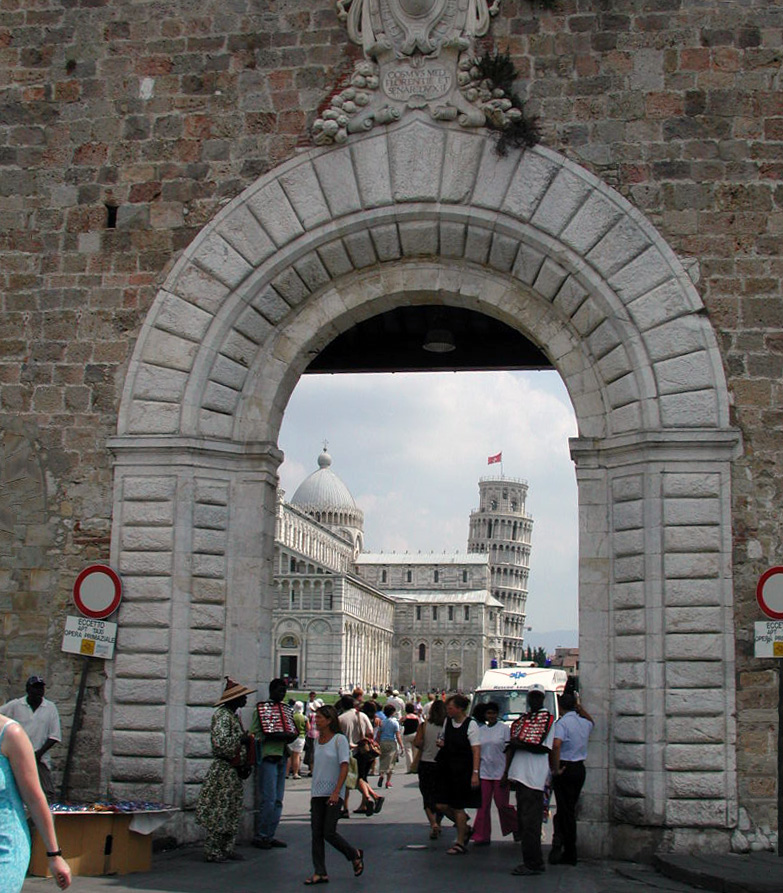
Told you, I just love those great and artfully created and displayed knockers
Italy 2001
Pisa
 |
Told you, I just love those great and artfully created and displayed knockers |
Pisa started in Etruscan times, 180 BC. Its location in the River Arno valley, close to the Tyrrhenian Sea, and in the north of Italy made it subject to frequent invasions by invaders, including the Vikings, Byzantines, and Saracens (Muslims) probably ranging up from Sicily. This same location also made it a wealthy center of trade, ranging as far as Spain and northern Africa. In 1075 AD Pisa evolved a set of legal merchant rules called the Conseutudini di mare, that enabled the merchants from Pisa to prosper even more (hence the invasions). Wealthy Pisa also was able to send troops in support of the Vatican's first crusade in 1099 AD, Pisa, now a city state of wealth and power even develped colonies in northern Africa, among them, Antioch, Tripoli, and Tunis and made it's own treaties, such as the one with Byzantium to open trade routes to the Holy Land. There was an uneasy relationship with Florence, another city state growing in power and influence, resulting in occasional military confrontation in the 13th Cent. These conflicts grew into major warfare until in 1509 they were forced to surrender and submit control of their city to the government of the Florentine Council of Ten, led by Machiavelli. They remained the harbor of Florence until the house of Medici weakened and the French King Charles VIII was given control of Pisa, to the great relief of the Pisans. Meanwhile, Pisa also became a center of learning and it is known that Galileo moved there to conduct his gravity experiments, Galileo Galilei also taught mathematics there and kept Pisa in the public eye with his clash with the Catholic establishment by his published support of the Copernican theory of a Solar-centric system, which ran counter to the Papal supported idea of the Earth-centric view of the universe. |
 |
Downtown in the old center of Pisa |
 |
Palazzo della Carovana dei Cavalieri Built in 1562-64 as headquarters of the Knights of St. Stephen, now is the admin building of the Scuola Normale Superiore |
 |
 |
The Camposanto Monumentale A cemetary and cloister complex built around a shipload of sacred soil from Golgotha brought back during a 12th Cent. Crusade |
 |
The Camposanto Monumentale is a fascinating place to visit. Here 13th Cent. murals and ornate sarcophagi The old rusty chain belongs to the ancient port of Pisa, taken by the Genovese and returned in 1860 |
 |
Among the many notables buried here is Leonardo Fibonacci |
 |
Although nearly impossible to reference, there is a room with early medieval tapestries. This is one of them |
 |
3rd Century Roman sarcophogi |
 |
Bas-relief gravestone in the floor, dated 1429, if I read that correctly |
 |
The Pisa Baptistery (AD 1152, opened 1363), the largest one in Italy |
 |
A closeup of the Gothic upper section of the Baptistry, the bottom is done in the Romanesque style |
 |
In foregound the baptismal font, with a statue of St. John, behind that the gorgeously carved pulpit by Nicola Pisano |
 |
Piazza dei MIracoli |
 |
Piazza dei MIracoli viewed from the top of the Baptistry |
 |
Summer 2001 was the first time in years that the Leaning Tower could be seen without scaffolding |
 |
A quick look back before ending the day trip from Rome and heading back to the station |